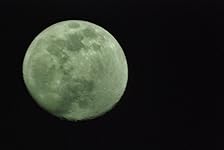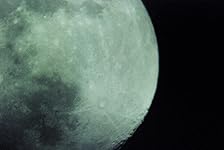Celestron - PowerSeeker 127EQ Telescope - Manual German Equatorial Telescope for Beginners - Compact and Portable - Bonus Astronomy Software Package - 127mm Aperture











Buy Now, Pay Later
- – 6-month term
- – No impact on credit
- – Instant approval decision
- – Secure and straightforward checkout
Ready to go? Add this product to your cart and select a plan during checkout.
Payment plans are offered through our trusted finance partners Klarna, Affirm, Afterpay, Apple Pay, and PayTomorrow. No-credit-needed leasing options through Acima may also be available at checkout.
Learn more about financing & leasing here.
Selected Option
Returnable until Jan 31, 2026 Learn more
To qualify for a full refund, items must be returned in their original, unused condition. If an item is returned in a used, damaged, or materially different state, you may be granted a partial refund.
To initiate a return, please visit our Returns Center.
View our full returns policy here.
Size: 127EQ
Style: Newtonian Telescope
Features
- PERFECT ENTRY-LEVEL TELESCOPE: The Celestron PowerSeeker 127EQ is an easy-to-use and powerful telescope. This 127mm Newtonian Reflector offers enough light gathering ability to see planets, the Moon's craters, distant stars, the Orion Nebula, and more.
- MANUAL GERMAN EQUATORIAL MOUNT: With its slow-motion altitude rod, the German Equatorial mount allows you to navigate the sky with ease. Find celestial objects quickly and follow them smoothly & accurately as they appear to drift across the night sky.
- COMPACT AND PORTABLE: The ideal telescope for adults and kids to use together, the PowerSeeker is compact, lightweight, and portable. Take it to your favorite campsite, a dark sky observing site, or simply the backyard.
- MULTIPLE ACCESSORIES: The Celestron PowerSeeker 127EQ Telescope comes with 2 quality eyepieces (20mm and 4mm) plus a 3x Barlow lens to triple the power of each. You'll also receive a FREE download of one of the top-rated astronomy software programs.
- UNBEATABLE WARRANTY & SUPPORT: Buy with confidence from Celestron, a leading telescope brand in California since 1960. Your purchase includes a 2-Year US Warranty and unlimited support from our team of US-based experts.
Description
Amateur astronomers will love the user-friendly features of Celestron’s PowerSeeker series of entry-level telescopes. The Celestron PowerSeeker 127EQ is an easy-to-use and powerful telescope. PowerSeeker Series Celestron telescopes have been designed with a combination of value, quality, power, and user-friendly features to enhance the experience for novice telescope users. This 127EQ telescope is the perfect choice for families in search of a high- quality telescope that is affordable and provides years of enjoyment. Powerful magnification and easy-to-use controls allow astronomers to obtain crisp views of the Moon, the rings of Saturn, and Jupiter’s Galilean moons. The telescope’s sturdy and durable mount features large, easy-to-manipulate slow- motion control knobs, allowing users to track objects smoothly. The 3x Barlow lens is added to triple the magnification power of the included 20mm and 4mm eyepieces. This essentially provides you with four eyepieces, giving you flexibility to view a wide range of outdoor or celestial objects. We’ve included an accessory tray to store accessories conveniently and download of our Starry Night Basic Edition astronomy software with information on 10, 000 celestial objects, printable sky maps, and more. The software can be used on your Mac, PC or laptop. It’s the best way to learn about the night sky and plan your next observing session. Additional accessories include a travel tripod. Celestron has established itself as the world’s 1 telescope brand. Celestron telescopes are used by scientists in world-class research observatories and even aboard the International Space Station. To ensure you have a great experience your first night under the stars, please refer to the User Guide in the Technical Specifications section below. Adjustable, full height tripod with deluxe accessory tray.
Brand: Celestron
Model Name: Celestron PowerSeeker
Optical Tube Length: 436 Millimeters
Eye Piece Lens Description: 20mm and 4mm
Objective Lens Diameter: 127 Millimeters
Telescope Mount Description: Manual German Equatorial
Product Dimensions: 33"D x 33"W x 54"H
Focus Type: Manual Focus
Power Source: Manual
Finderscope: Finderscope
Product Dimensions: 8.46 x 16.73 x 29.92 inches
Item Weight: 13 pounds
Item model number: 21049-CGL
Batteries: 1 Lithium Metal batteries required.
Is Discontinued By Manufacturer: No
Date First Available: October 2, 2001
Manufacturer: Celestron Acquisition LLC
Language: English
Frequently asked questions
To initiate a return, please visit our Returns Center.
View our full returns policy here.
- Klarna Financing
- Affirm Pay in 4
- Affirm Financing
- Afterpay Financing
- PayTomorrow Financing
- Financing through Apple Pay
Learn more about financing & leasing here.
Similar Products
Top Amazon Reviews




















